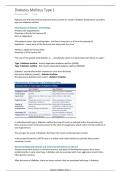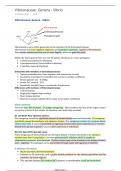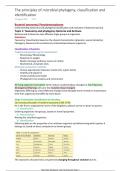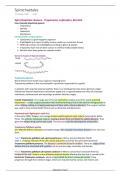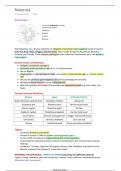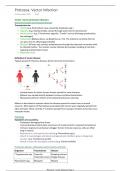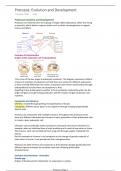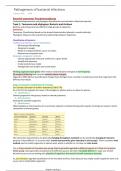University of Surrey (UNIS)
Latest uploads at University of Surrey (UNIS). Looking for notes at University of Surrey (UNIS)? We have lots of notes, study guides and revision notes available for your school.
-
215
-
3
-
13
Courses at University of Surrey (UNIS)
Notes available for the following courses at University of Surrey (UNIS)
Popular books University of Surrey (UNIS)
Latest notes & summaries University of Surrey (UNIS)
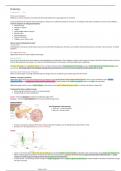
Explore the pathophysiology of diabetes, including Type 1 and Type 2 diabetes, gestational diabetes, and other related disorders. Understand the underlying mechanisms, risk factors, and complications associated with each type.
- Book & Paket-Deal
- Lecture notes
- • 2 pages's •
Explore the pathophysiology of diabetes, including Type 1 and Type 2 diabetes, gestational diabetes, and other related disorders. Understand the underlying mechanisms, risk factors, and complications associated with each type.
Explore the fundamental aspects of Diabetes Mellitus Type 1, including its pathophysiology, symptoms, and diagnostic criteria.
Gain insights into the most prevalent waterborne protozoan pathogens, including Giardia lamblia, Entamoeba histolytica, and Cryptosporidium spp. Learn about their life cycles, transmission routes, and ecological impact. Understand the mechanisms through which these protozoa cause disease in humans, including symptoms, incubation periods, and clinical manifestations.
Explore the mechanisms of infection, virulence factors, and the impact of Vibrio species on human health. Learn about the transmission pathways, clinical manifestations, and outbreaks associated with these bacteria. Analyze the global distribution of Vibrio species, factors contributing to outbreaks, and the significance of environmental conditions in Vibrio ecology.
Explore the principles of phylogenetics and how molecular techniques are used to establish the evolutionary history of microbes. Learn about the importance of ribosomal RNA (rRNA) sequences in constructing phylogenetic trees. Understand the classification system from domain to species, including the criteria used to categorize bacteria, archaea, fungi, protozoa, and viruses. Gain insight into the physical and biochemical traits that aid in microbial identification, such as cell shape, size...
Explore the taxonomy of Spirochaetales, including major genera such as Treponema, Borrelia, and Leptospira. Gain a clear understanding of their distinctive spiral shape, flagella structure, and unique cell wall composition.
Gain a solid understanding of Rickettsia's biology, including its unique morphology, life cycle, and growth requirements. Learn how Rickettsia interacts with host cells, the mechanisms of pathogenesis, and the clinical manifestations of Rickettsial infections.
Detailed descriptions of major protozoan pathogens, including Plasmodium, Leishmania, and Trypanosoma, with insights into their life cycles and pathogenic mechanisms. Clear explanations of the vectors involved in transmission, such as mosquitoes and sandflies, highlighting their roles in disease outbreaks. Information on symptoms, diagnosis, and treatment strategies for diseases caused by protozoan infections, enhancing your understanding of real-world applications.
Explore the origins and evolutionary adaptations of protozoa, including key events that shaped their diversity and classification. Understand the various forms and structures of protozoa, from flagellates to amoeboids, and their ecological roles. Gain insights into the life cycles of protozoa, including asexual and sexual reproduction, and the environmental factors that influence their development.
Learn about the various strategies employed by bacteria, including adherence, invasion, and colonization. Each mechanism is clearly explained with examples from clinically significant pathogens. Explore the specific traits that enhance a bacterium's ability to cause disease, such as toxins, enzymes, and surface proteins. Understand how these factors contribute to pathogenicity and the clinical implications of bacterial infections. Gain insights into the dynamic relationship between bac...


